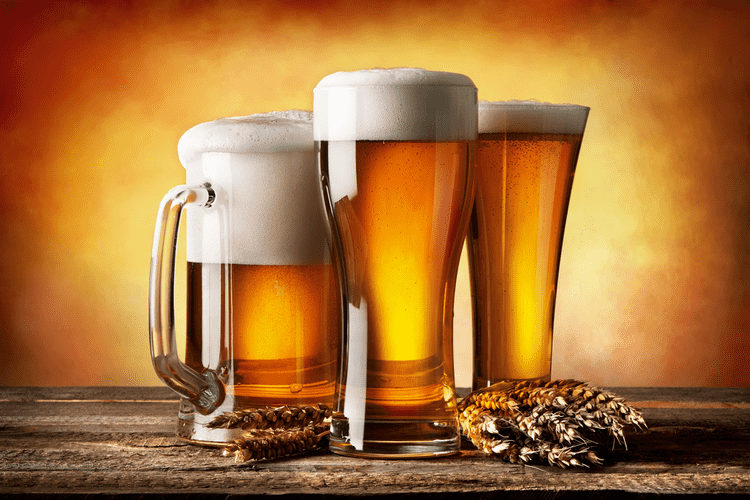As your body works to lower your blood alcohol level, you may experience disrupted sleep and wake up more often than usual. After you drink alcohol, it is absorbed into your bloodstream and processed in the liver. How long this takes can depend on many factors – including the amount of alcohol, your age, how much you’ve eaten, your sex, and your body type.
The cell-mediated arm of the innate immunity is orchestrated primarily by granulocytes, monocytes/macrophages, dendritic cells, and natural killer (NK) cells. Granulocytes are white blood cells (i.e., leukocytes) that derive their name from the large granules that are visible when the cells are stained for microscopic analysis. They further are characterized by oddly shaped nuclei with multiple lobes and therefore also are called polymorphonuclear leukocytes (PMNs). These cells act as phagocytes—that is, they engulf pathogens and ingest them in a process called phagocytosis. In addition, they can excrete toxic substances from their granules that can kill pathogens.
Circulating Factors
Microglia express PRRs, produce cytokines, and modulate neuroinflammatory reactions in brain injury and neurodegenerative diseases (Block, Zecca et al. 2007). In Sprague Dawley rats exposed to 25% (w/v) ethanol via intragastric gavage every 8 hours for 4 days, increased activation and proliferation of microglia as evidenced by morphological changes and BrdU incorporation were observed in the hippocampus (McClain, Morris et al. 2011). Changes persisted at least 30 days after alcohol exposure suggestive of longlasting consequences of ethanol on microglia function (McClain, Morris et al. 2011). There is also evidence that ethanol-induced microglia activation is mediated by signaling through TLR4 (Fernandez-Lizarbe, Pascual et al. 2009). Prolonged alcohol consumption can weaken the body’s natural defense against diseases, putting heavy drinkers at risk of getting sick and perhaps staying sick. Alcohol in large amounts can be so harmful to the immune system that a person who indulges in excessive drinking could be just as much at risk of getting sick as someone who drinks regularly.

Ethanol may be detrimental to immune cells due to the generation of free radicals during clearance; however, alcoholic beverages containing antioxidants should be protective against immune cell damage. Daily moderate consumption of alcohol (500 ml of a 12 % ethanol dilution), 500 ml of red wine, red grape juice, and de-alcoholized red wine for two Three Inspirational Recovery Stories weeks at doses that inversely correlate with cardiovascular disease risk did not show any effects on human immune cell functions. Just overdoing it once slows your body’s ability to fight germs for up to 24 hours. That may be part of the reason you’re more likely to get illnesses like liver disease, pneumonia, tuberculosis, and certain cancers.
Alcohol Use As a Risk Factor in Infections and Healing: A Clinician’s Perspective
Alcohol does affect your ability to stay healthy, but that’s also dependent on how much you’re drinking. By illuminating the key events and mechanisms of alcohol-induced immune activation or suppression, research is yielding deeper insights into alcohol’s highly variable and sometimes paradoxical influences on immune function. The insights summarized in this issue of ARCR present https://accountingcoaching.online/alcoholism-and-nutrition-a-review-of-vitamin/ researchers and clinicians with opportunities to devise new interventions or refine existing ones to target the immune system and better manage alcohol-related diseases. If you are drinking heavily or are worried you may be dependent on alcohol, reach out to a healthcare provider before you start reducing your alcohol consumption to determine the safest way to make changes.

Moreover, the wide-ranging roles of the immune system present significant challenges for designing interventions that target immune pathways without producing undesirable side effects. In addition to pneumonia, alcohol consumption has been linked to pulmonary diseases, including tuberculosis, respiratory syncytial virus, and ARDS. Alcohol disrupts ciliary function in the upper airways, impairs the function of immune cells (i.e., alveolar macrophages and neutrophils), and weakens the barrier function of the epithelia in the lower airways (see the article by Simet and Sisson).
Which Medications Treat Alcohol Withdrawal Syndrome? How Benzos and Others Can Help
Sunlight may energize special cells in your immune system called T-cells that help fight infection. Many plants in the woods make phytoncides and other substances you breathe in that seem to bolster your immune function. Binge drinking — defined as more than four drinks for women or five drinks for men in two hours — can also trigger a long-lasting genetic change. This can result in heightened cravings for alcohol that can lead to alcohol addiction, Sarkar explains. An army of antibodies — Another subsystem of the immune system is called adaptive immunity.

Normally, the lungs and gut, like our skin, offer a physical and immunological shield against infection but too much alcohol can disrupt that. The body constantly is exposed to pathogens that penetrate either our external surface (i.e., the skin), through wounds or burns, or the internal surfaces (i.e., epithelia) lining the respiratory and gastrointestinal (GI) tracts. The body responds to such an infectious challenge with a two-level response. The first line of defense is called the innate immunity;1 it exists from birth, before the body is even exposed to a pathogen. It is an immediate and rapid response that is activated by any pathogen it encounters (i.e., is nonspecific); in addition, it plays a key role in the activation of the second level of the immune response, termed the adaptive or acquired immunity. This part of the immune response is specific to one particular pathogen and also creates an “immune memory” that allows the body to respond even faster and more effectively if a second infection with the same pathogen occurs.
How Alcohol Weakens Your Immune System
To this end, heavy drinkers have been shown to exhibit an increase in both IgA and IgM levels when compared to both moderate and light male drinkers. Research has also shown that alcohol use can worsen the symptoms of sleep apnoea, a disorder in which your breathing stops and starts while you sleep6. Even if you don’t have the condition, studies show that moderate or heavy drinking can cause episodes of obstructive sleep apnoea. About one-third of all patients with wounds such as burns, broken bones, and brain and other tissue injuries have blood alcohol content above the legal limit at the time of injury.
- The white blood cells, tissues and organs that make up our body’s immune system are designed to fight off infections, disease and toxins.
- Rodent studies offer several advantages such as availability of transgenic models that can facilitate mechanistic studies.
- It’s important to note that any amount of alcohol in your system can interfere with your ability to think and function without impairment.
However, chronic and heavy alcohol consumption can lead to fewer T cells and B cells. Past research shows alcohol consumption leads to more severe lung diseases, like adult respiratory distress syndrome (ARDS) and other pulmonary diseases, including pneumonia, tuberculosis, and respiratory syncytial virus. If you fall asleep after drinking too much, your body will continue to break down the alcohol during the night.
Take our free, 5-minute substance abuse self-assessment below if you think you or someone you love might be struggling with substance abuse. The evaluation consists of 11 yes or no questions that are intended to be used as an informational tool to assess the severity and probability of a substance use disorder. The test is free, confidential, and no personal information is needed to receive the result. Alcohol use can exacerbate mental health conditions, like anxiety and depression, or lead to their onset. Ethanol is primarily metabolized in the stomach and liver by alcohol dehydrogenase (ADH) and cytochrome P450 2E1 (CYP2E1) (Zakhari 2006).
